|
Genres, Themes, Actors, and Directors:
- Cary Grant Films
- Cults
- Douglas Fairbanks, Jr. Films
- George Stevens Films
- Gold Seekers
- India
- Joan Fontaine Films
- Sam Jaffe Films
- Soldiers
- Victor McLaglen Films
Response to Peary’s Review:
Peary is unambiguously fond of this “all-time great Hollywood action-adventure” flick, “inspired by Kipling’s famous poem about an Indian water boy who won the hearts of the British soldiers he served.” Peary focuses his review on comparing the storyline to that of Alexandre Dumas’s The Three Musketeers, with Gunga Din (similar to D’Artagnan) “a fearless, poor outsider whose life’s dream is to be one of the French muskeeters”, portrayed in this film by Grant, McLaglen,and Fairbanks, Jr. as “three inseparable, cheerful, fight-loving British soldiers” who “are also reluctant to let the outsider into their select company, treating him like a mascot until he proves himself.” He points out that “the action scenes are great fun and, until the final battle, usually feature bits of slapstick and funny heroics by the three imperturbable leads”. He further notes that while the “film should have been in color”, it “still has great pictorial beauty”, and that the “super direction” by George Stevens leads to a film that’s “spirited, stirring, and, finally, sentimental.”
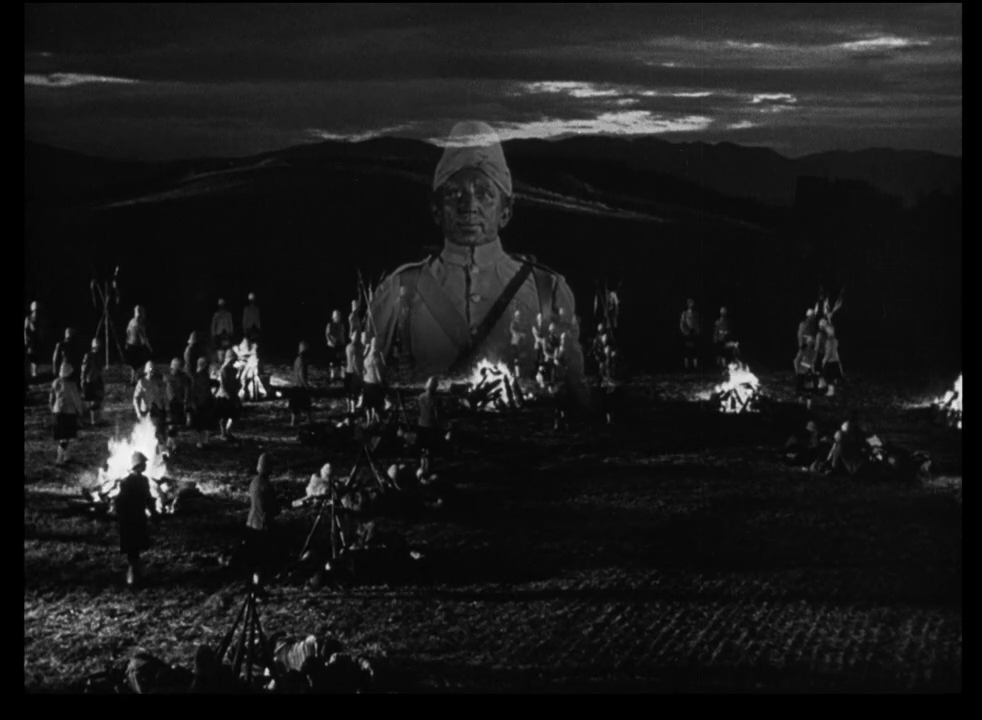
This is all true: Gunga Din is wonderfully mounted, featuring atmospheric cinematography, solid performances, and fine handling of action scenes. However, it’s impossible not to be disturbed by the film’s blatantly Orientalist view of colonized India. Kipling’s poem is more than casually racist, as the following quotes demonstrate:
Of all them blackfaced crew
The finest man I knew
Was our regimental bhisti, Gunga Din
. . .
An’ for all ’is dirty ’ide
’E was white, clear white, inside
When ’e went to tend the wounded under fire!
DVD Savant’s review begins to get at the more problematic aspects of this film, pointing out that “Din is the prime example of the child-like ‘native’ that lives for the doglike joy of pleasing his anglo superiors.
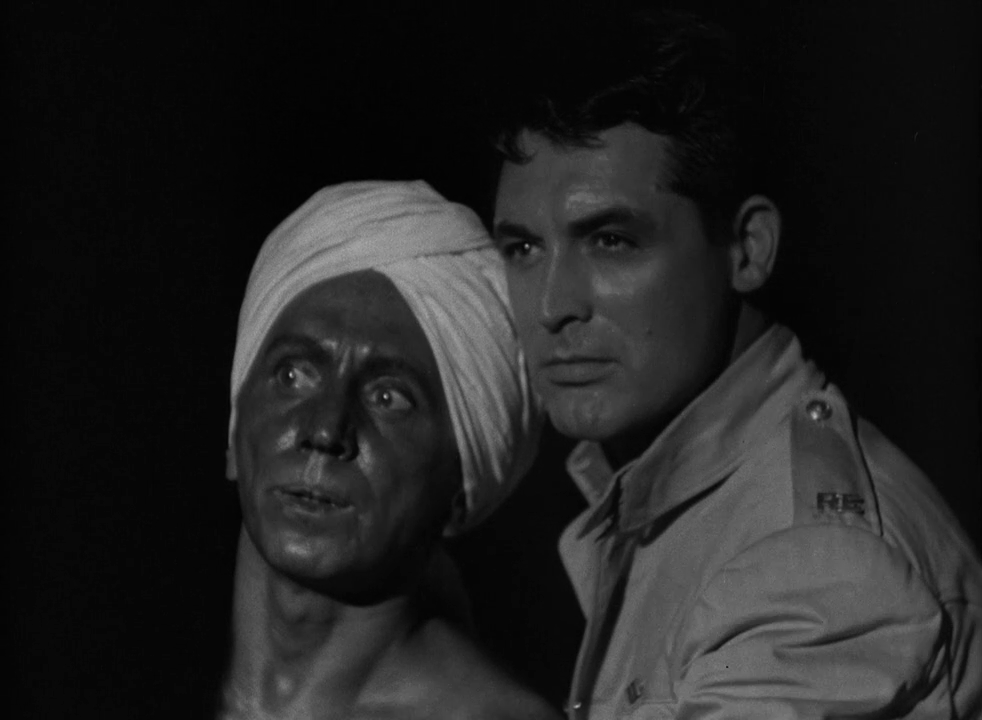
Grant is a nice guy, and treats Din to the ‘honor’ of military compliments, with gestures halfway between sincerity and snickering patronizing.” Savant also reminds us how blatantly history is misrepresented in the film, given that “the 1870s-1880s battles in India were [actually] fought against rebel princes and Rajas resisting English rule” — though of course “it’s always convenient to characterize those resisting Western force-of-arms as fanatic cultists.”
Redeeming Qualities and Moments:
- Rousing performances by the three leads
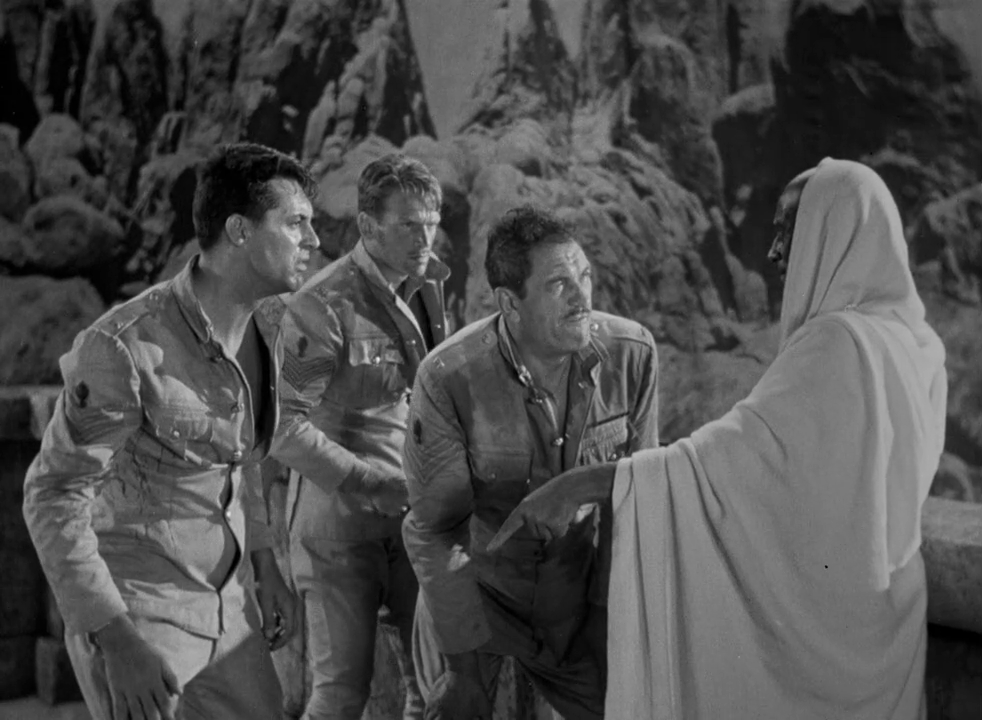
- Good use of location shooting in Lone Pine, California
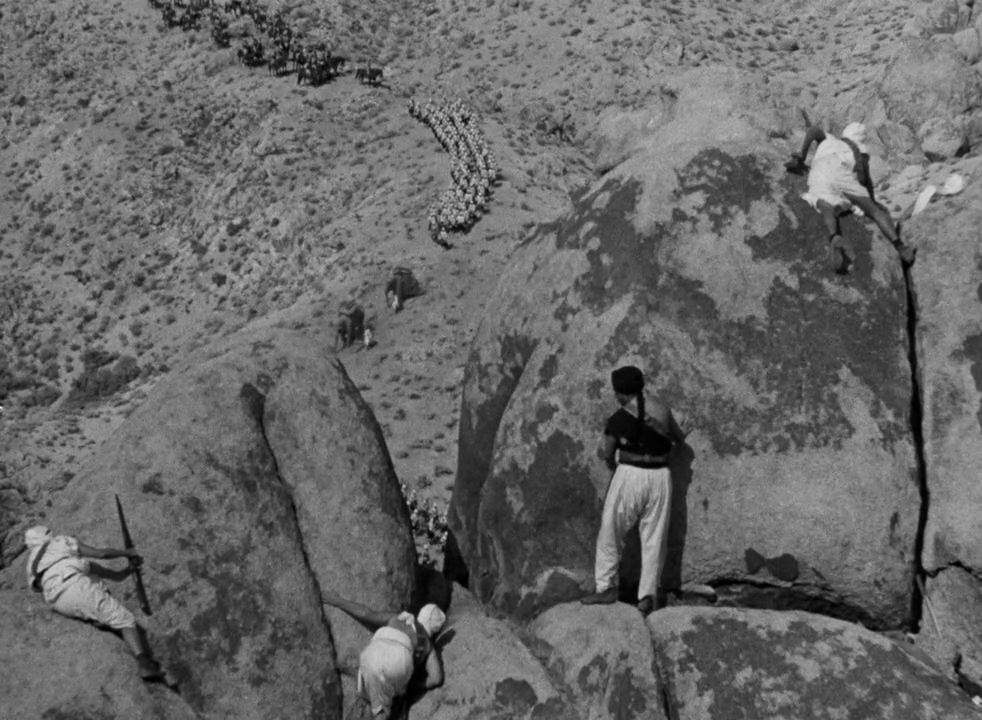
- Joseph August’s cinematography
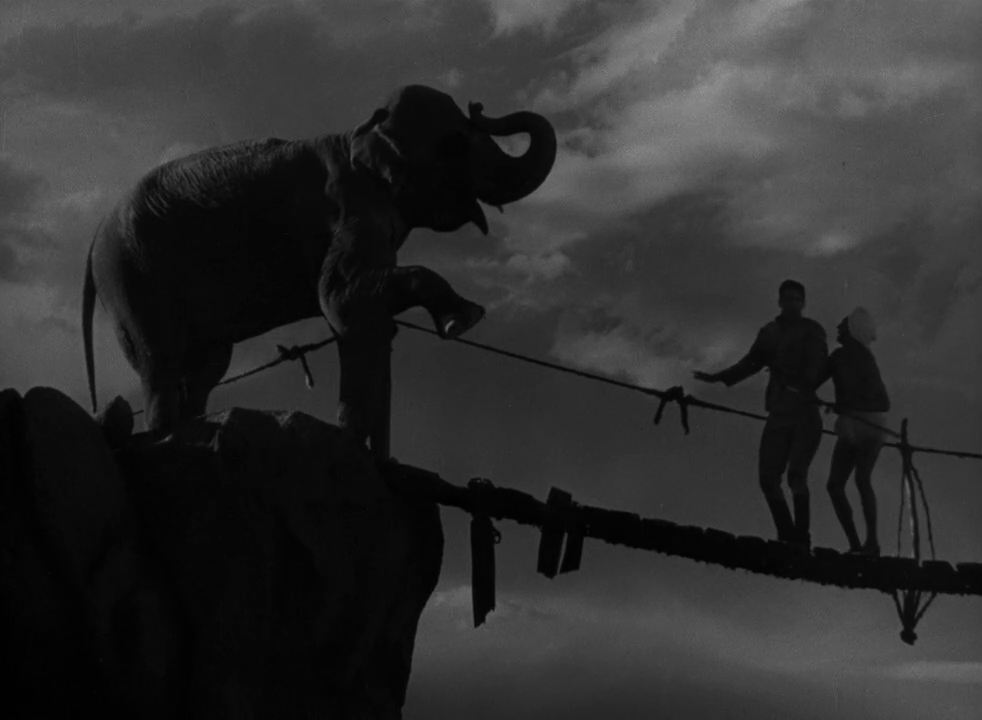
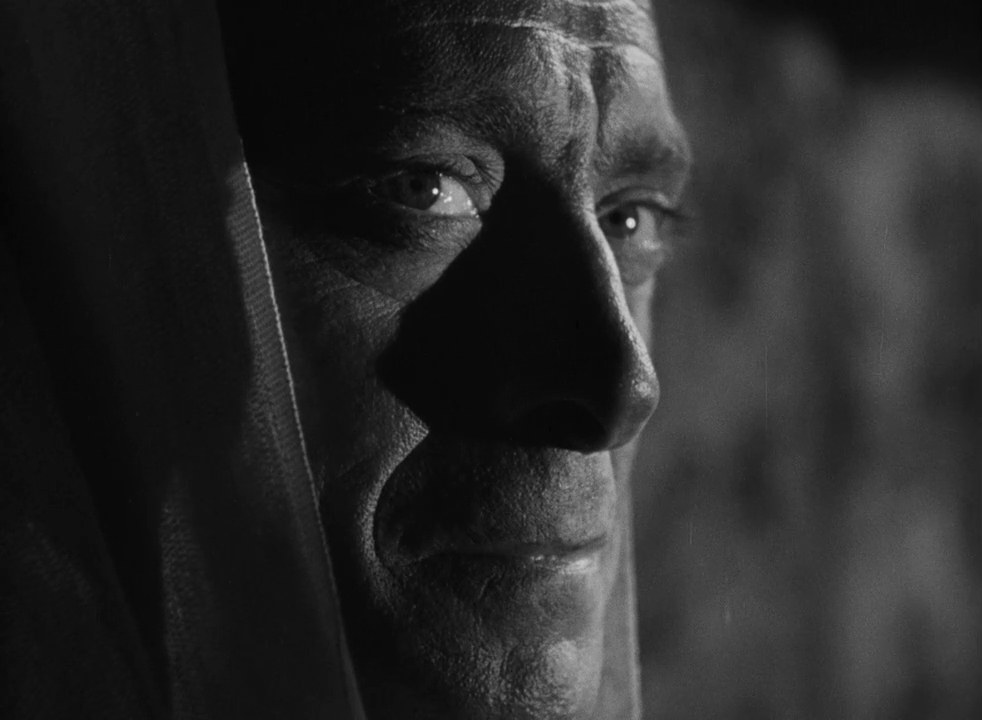
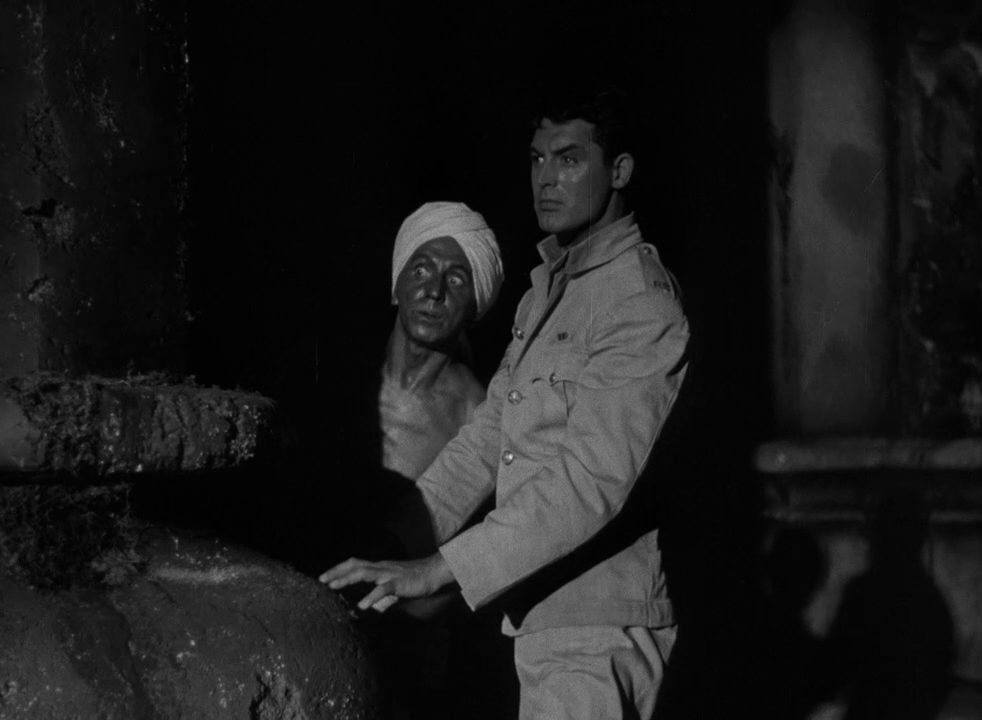
Must See?
Yes, once, for its historical relevance and spirited storyline.
Categories
Links:
|








One thought on “Gunga Din (1939)”
A once-must for its place in cinema history.
If I knew more about colonial-era India, my observations on films set there would be a different matter. Alas, I don’t know as much as I should. So when I see a film like this, I can only take it as presented. Here we have a story about a “murderous” clan of “very bad men” rising up again after being defeated years earlier.
(One wonders: Do any of them have homes somewhere to go to?, where there might be women and children?)
The average viewer would have a difficult time trying to understand these thousands of men killing in the name of the goddess Kali. Wikipedia tells us that, originally, Kali was presented as “a destroyer of evil forces”. Yet, in ‘Gunga Din’, Kali’s followers are shown to be men who kill for the love of killing – and that that those who aren’t them are evil. …It’s all very confusing.
So we’re left observing an incident with scant details of its backstory.
Given that… the tale as it is is well-told. It’s shot and edited well and, for a change, director George Stevens is not at all intrusive in the telling.
A real plus for the film is the chemistry that binds Grant, McLaglen and Fairbanks, Jr. They’re a solid trio of devoted soldiers and their inter-play is consistently satisfying.
(Of course, they’re not around women either – except the rather forgettable Fontaine – but, then, they’re in a military camp. …But then, during the pre-wedding celebration, where do all of those women come from?)
Cianelli’s portrayal of the Guru is thoroughly black and is chilling in his calmly vicious intent. Jaffe is fine with what he’s asked to do but I do find it odd: the film is named after a character who is given surprisingly little screen time and rather-inadequate definition.